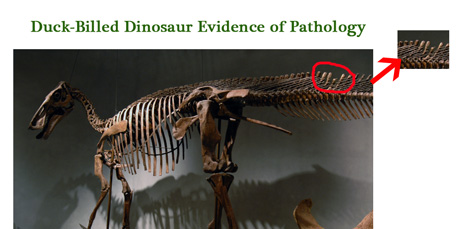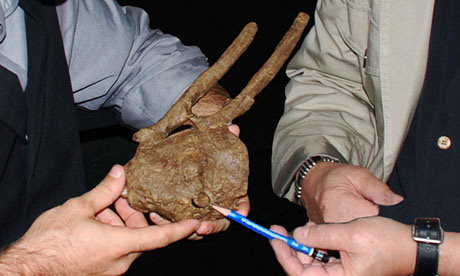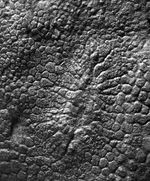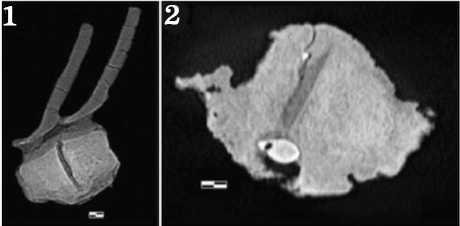Tyrannosaurus rex – Hunter or Scavenger Debate Reignited after Fossil Find
Almost ever since T. rex was formally named and described back in 1905, debate has raged amongst scientists as to whether this Late Cretaceous dinosaur was an active hunter or primarily a scavenger. The skull of Tyrannosaurus rex is relatively short when compared to an adult body length somewhere in excess of 13 metres and the teeth in its exceptionally strong jaws are very different in shape when compared to other large meat-eating dinosaurs such as the allosaurids and the abelisaurs. It is true, the teeth are large, those in the maxilla and dentary (upper and lower jaws), for example, can be in excess of 18 cm long and more than 2.5 cm wide at the point where the crown would emerge above the gum line.
Theropod Teeth
However, the teeth are not necessarily recurved and sabre-like, the sort of teeth one associates with the likes of Mapusaurus, Carcharodontosaurus or even Ceratosaurus. Having had the opportunity to study tyrannosaurid teeth in detail, it is surprising how blunt they feel at the tips, indeed one of their most remarkable features is their characteristic “D” shape in cross section. Are these the teeth of an active hunter, or the bone crushing dentition of a scavenger?
A team of American scientists have discovered the tip of a tyrannosaur tooth, embedded in the tail bones of a large, duck-billed dinosaur. The bone surrounding the tooth shows signs of healing. Is this physical evidence of a tyrannosaur hunting and attacking another dinosaur? Could the debate over the hunter versus scavenger issue be finally laid to rest?
Tyrannosaurus rex Feeding Strategies
The feeding strategies of large, theropod dinosaurs such as Tyrannosaurus rex have been debated by palaeontologists for a long time. Fossil finds have provided some tantalising glimpses into feeding behaviour, however, it is notoriously difficult to distinguish post-mortem pathology with evidence of interspecific hunting behaviour. There have been several Triceratops fossils found which show tell-tale puncture marks from the teeth of T. rex, but it is impossible to tell whether these wounds were made by a feeding tyrannosaurid on a Triceratops carcase or as a result of a fight between these Late Cretaceous giants.
In a paper published in the academic journal “The Proceedings of the National Academy of Sciences”, the researchers report on the discovery of a tyrannosaur tooth crown stuck fast in the tail bone of a herbivorous Edmontosaurus, the scientists conclude that this is definite evidence of predation by a T. rex, an attack by an immature tyrannosaur on a duck-billed dinosaur.
Hadrosaur with Bite Mark
At the Denver Museum of Nature and Science there is a mounted exhibit of a large, hadrosaur (Edmontosaurus annectens), with a strange “U” shaped bite mark out of its tail. This has been described as the damage caused by an attack from a Tyrannosaurus rex, although, unlike this new study, there was no tell-tale evidence of a tooth being left behind.
Hadrosaur Exhibit Shows Evidence of Tyrannosaur Attack?
Picture credit: Denver Museum of Nature and Science/Everything Dinosaur
In the picture above, the mounted hadrosaur exhibit is shown with the damage to the neural arches on some of the caudal vertebrae highlighted.
T. rex Tooth
The academic paper was produced by scientists from the Department of Palaeontology (Palm Beach Museum of Natural History, Florida), Pete Larson from the Black Hills Institute of Geological Research (South Dakota) and researchers from the University of Kansas. One of the paper’s authors, Larry D. Martin of the University of Kansas Biodiversity Institute sadly passed away earlier this year. This paper was one of the very last that he contributed to. The hadrosaur fossils, ascribed to Edmontosaurus were found in South Dakota and come from the famous Hell Creek Formation. The two traumatically fused caudal vertebrae (tail bones), partially enclose the tip (part of the crown), of a tyrannosaurid tooth, one that is believed to represent the dentition from a partial grown, immature Tyrannosaurus rex.
The Researchers Show the Fossilised Tooth Fragment Embedded in the Tail Bones
Picture credit: David A. Burnham/University of Kansas Biodiversity Institute
The healed bone growth indicates that the duck-billed dinosaur survived this encounter. In February of this year, researchers from the University of Kansas and Florida reported on the discovery of evidence of a scar on fossilised skin tissue from just above the eye of an Edmontosaurus. In a paper, published in “Cretaceous Research”, the scientists concluded that this too was evidence of an attack of a T. rex on an Edmontosaurus.
Hadrosaur Fossilised Scar – Evidence of an Attack from a T. rex?
Picture credit: Robert DePalma/Palm Beach Museum of Natural History
A Hunter or Scavenger?
A number of eminent palaeontologists have commented on the scavenger/hunter debate over the years. It is likely, that just like most large carnivores today, if a Tyrannosaurus rex found the corpse of another dinosaur it would very probably feed off the kill – a sort of “free lunch” for a tyrannosaur. However, as an opportunistic feeder, if the same T. rex got the chance to approach undetected a potential meal such as a duck-billed dinosaur, then it would probably have used this chance to launch an attack.
Back in the summer of 2010, as part of Everything Dinosaur’s museum outreach programme, team members devised a presentation on the hunter versus scavenger topic. Members of the public could examine some of the evidence and decide for themselves as to whether Tyrannosaurus rex was an active hunter or a rather ponderous meat-eater preoccupied with scavenging the kills of other dinosaurs. To see the results of the survey: Results of the T. rex Hunter or Scavenger Survey.
CT Scans of the Fused Hadrosaur Tail Bones
Picture credit: Robert DePalma et al
The picture above shows computerised tomography (CT) scans of the hadrosaur fossil bones. 1) the two tail bones fused together and 2) showing the cross-section of the Tyrannosaurus rex tooth buried in the bone (the white oval at the bottom of the picture (2)). The scale bars shown represent 1 cm.
Far from being definitive prove, “smoking gun” evidence that Tyrannosaurus rex was indeed an apex predator, some scientists have challenged the paper’s findings. Dr Paul Barrett (Natural History Museum, London), rather summed up some of the comments that have been reported by stating:
“This paper shows without question that a T. rex bit a living Hadrosaur, but it can’t show if this was a regular behaviour or not, or even if this was hunting behaviour rather than some other kind of interaction”.
For models and replicas of Tyrannosaurus rex and other prehistoric animals: Rebor Prehistoric Animal Figures and Replicas.









I find it laughable and somewhat desperate that supposedly reputable and intelligent paleaontologists persist in attempting to debunk T-Rex and its cousins as no more than lumbering scavengers. Given the diversity of large herbivores in the northern hemisphere, and the co-emergence of particularly heavily armoured types alongside the holotype of T-Rex, it appears doubtful from an ecological perspective that this evolutionary strategy of herbivores was driven by interactions with the small dromeosaurids alone. After all, the early and relatively large Deinonychus was a denizen of the early Cretaceous, and true dromeosaurid forms changed little from this time until the KT event, indicating a stable ecological niche and a hunting srategy which was so effective it required little modification over time. However, early tyrannosaurid forms recall the dromeosaurid form, but change and advance and grow alongside the herbivourous fauna. This itself indicates that dinosaur interactions were becoming more complicated in time. Whilst it could be argued that ceratopsian adornments were propagated by sexual selection, and therefore not necessarily for defensive purposes, it is harder to dismiss ankylosaurids and their relatives as the product of an evolutionary arms race between small predators and large herbivores.
I could go on and on, but I’m boring myself now. As far as I’m concerned the point is moot. It irritates me deeply that scientists will allow their egos to effectively attempt to manipulate public opinion in pursuit of glory. I find it deeply disrespectful to the very values of science, and obstructive to open-minded, objective and progressive debate when the obvious is so manipulatively argued down by rowdy fools. Brute force and ignorance – ironically, the probable tools of T-Rex herself. Albeit used in a far more primal, and therefore honest way.
The argument T. rex was an active carnivore, no he wasn’t he was just a scavenger is tiresome. The detective work that went into finding the broken tooth and using a cat scan to elucidate what happened is far more interesting then Paul Barrett’s throw away remark which would have us believe that the tyrannosaur bit the Edmontosaurus and apologised afterwards for his mistake as he was just a scavenger.